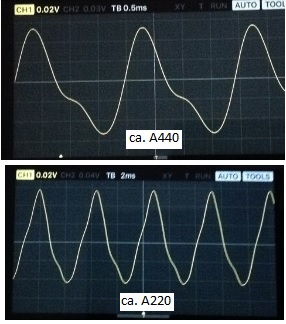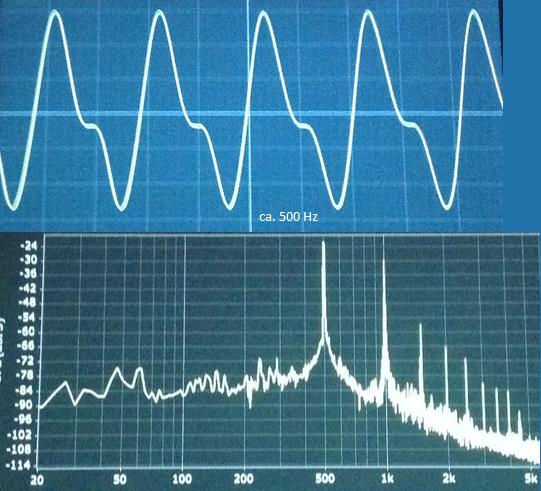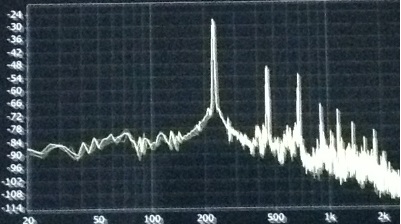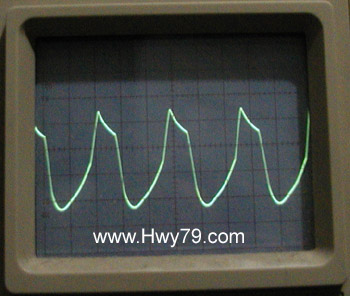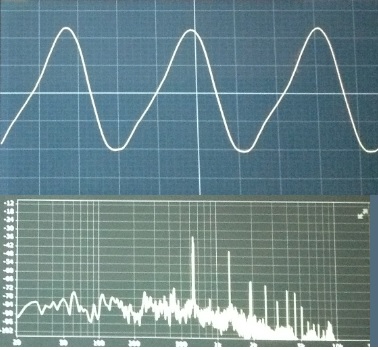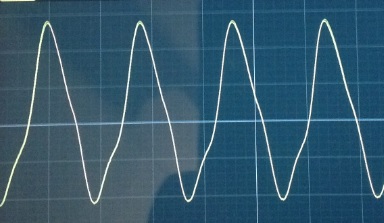Starting a thread for people interested in recreating the theremin sound and experimenting with analog synthesis, sampling, granular synthesis, etc in relation to theremin. I'll also start putting up some waveforms of my instruments to study. Likely will be a small audience. Be nice if we can all post waveforms here and collect a library of them - which will help recreate the sounds. And maybe help others build theremin sound sources.
Being an analog synth lover, from the first time I started playing the theremin I thought about what is so special about the sound? Now with the theremin, the method of playing is totally unique, as is the expressive potential due to the fluidity of pitch and to a lesser extent volume control but I contend that in this day and age, there is absolutely nothing that special about the sound of the theremin (from just a raw tonal perspective). If anything it is among the simplest of oscillator sounds when compared to today's plethora of analog sound sources (ok maybe not counting those magnificent old tube theremins). In fact, its two dimensional sound creates listening issues for me. Really nice to hear for a few minutes, but does anyone really want to hear two hours of the same theremin playing basically the same timbre with little harmonic motion (in the overtone sense). If you ask me, modern thereminists need greater sonic potential to keep an audience's interest.
What makes sense is a digital theremin that can create a multitude of sounds or a method where an analog sound source (i.e. a synthesizer) can be used in place of the internal theremin oscillator. Would be nice if you only had to buy one theremin but could make it sound like any theremin (the Holy Grail of theremin simulation). I assume more digital theremins will be coming soon.
My big issue: Not being the greatest thereminist, but wanting to compose for perhaps the most difficult instrument to play presents a challenge. I want to write pieces and create examples that are realisitc enough for a thereminist to get a good idea of how the piece might actually sound. Sometimes my playing is good enough for that, sometimes not. This presents two major problems:
1. Simulating an acceptable theremin sound
2. Creating a method of playing that sound which emulates the flexibility and nuance of a real theremin.
#1 is not so hard. Just play around with a triangle wave and some filtering and maybe a bit of modulation and perhaps fiddle a bit with envelope. Sooner or later you will find something that sounds like one or more of the theremins you know. In fact with a decent synthesizer there is no reason why you can not get a sound close to virtually every theremin you have ever heard.
Now sampling is another option but that's where #2 kills the deal. MIDI controlled samples have limitations, but I've used the SampleMoog Etherwave sample set effectively - though it still is quite lacking.
So how do we get a way of simulating the theremin expression and nuance? Well we can connect up the Etherwave Plus CV to the synth. But that is not helping the playing problem as you are simply replacing the internal oscillator with an external one and you still have to play the theremin just as you normally would (though you have just vastly opened up the sonic potential of the instrument).
Using an LFO to create modulation is out. That's too fake and artificial as the modulation is too consistent (though maybe you could throw the modulation source through a random noise generator to model it better - I need to try that with a Wogglebug for those that know what that is). Using a mod wheel and keyboard is even more problematic. You can't get a natural vibrato and portamento that way.
Ah, but enter the Haken Continuum with CV control option. You can get a very nice and natural vibrato with the Continuum and it can create natural portamentos as well. It also has an extra dimension of control (Y axis) that can be used to add varying harmonic content - which may come in useful but will not really do much to help emulate a thermein which is more two dimensional in sound to begin with. I am experimenting with the Continuum's internal sound engine to recreate a theremin sound - and will report back on that later.
In the OPEN.Theremin thread we discussed using an Arturia MicroBrute to simulate a theremin. I just got a MicroBrute Analog synthesizer (monophonic) for modular control but I thought I'd experiment with it and the Continuum for a little bit. Hooked it up to the Continuum's CV gate and pitch, tuned the oscillator (there a knob for that) and then played around with a triangle wave with a bit for filter and resonance control and added a little overtone complexity to it (there is a knob for that). I got something that is very close to the Etherwave Sample library I have been using, only with the Continuum I can add a lot more natural control than I can with the sample library. And with the Continuum of course, I can easily play melodies. Interesting experiment. However I can't seem to figure out how to control the VCA like I can with a modular synth (where I will likely have more success recreating volume control).
Here's a little sound clip. Need to experiment a bit more here. But lack of a way to control volume with Continuum Z Axis (finger pressure) may kill this deal - you can set the gate to trigger an VCA envelope but that may not be sufficient for theremin like volume response (which can be approached though VCA CV in control on the modular).
Arturia MicroBrute & Haken Continuum Theremin Simulation



